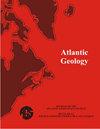加拿大新斯科舍省布雷顿角岛断层的地质和水文地质:概述
IF 0.9
4区 地球科学
Q2 GEOLOGY
引用次数: 3
摘要
布雷顿角岛提供了一个水文地质视角,可以看到一个古老山脉的根部,现在已经被挖掘出来,冰川覆盖,构造不活跃。它显示了与古生代阿巴拉契亚山带和海利斯盆地形成有关的深部地壳断裂和岩浆房,以及与大西洋打开有关的中生代裂谷。新生代的发掘将这些特征带到了地表附近,并进入了活跃的地下水流场,在那里它们受到了冰川作用和海平面波动的影响。从社会的角度来看,断层在城市地下水供应的发展、控制地下水流入、油气勘探、采石场开发和岩土工程调查中都很重要。本文提出的概念模型以七个实例为基础,概述了断层对地下水流动的控制。未来的研究应侧重于盆地边界断层,以支持管理其在含水层发育和保护、山前补给、控制大震级泉、地下水-水流相互作用和河道形态方面的作用。这些断层的水文地质重要性历来未得到充分认识。本文章由计算机程序翻译,如有差异,请以英文原文为准。
Geology and Hydrogeology of Faults on Cape Breton Island, Nova Scotia, Canada: an overview
Cape Breton Island provides a hydrogeological view into the roots of an ancient mountain range, now exhumed, glaciated, and tectonically inactive. It exhibits deep crustal faults and magma chambers associated with formation of the Appalachian mountain belt and the Maritimes Basin during the Paleozoic, as well as Mesozoic rifting relating to the opening of the Atlantic Ocean. Cenozoic exhumation brought these features near surface and into the active groundwater flow field where they were impacted by glaciation and fluctuating sea level. The faults have been important from a societal viewpoint in development of municipal groundwater supplies, controlling inflows to excavations, hydrocarbon exploration, quarry development, and geotechnical investigations. Conceptual models presented here outline fault control on groundwater flow based on seven case studies. Future research should focus on basin-bounding faults in support of managing their role in aquifer development and protection, mountain-front recharge, controlling large-magnitude springs, groundwater–stream interaction, and channel morphology. The hydrogeological importance of these faults has historically been underappreciated.
求助全文
通过发布文献求助,成功后即可免费获取论文全文。
去求助
来源期刊

Atlantic Geology
GEOLOGY-
CiteScore
2.10
自引率
18.80%
发文量
0
审稿时长
>12 weeks
期刊介绍:
Atlantic Geology (originally Maritime Sediments, subsequently Maritime Sediments and Atlantic Geology) covers all aspects of the geology of the North Atlantic region. It publishes papers, notes, and discussions on original research and review papers, where appropriate to the regional geology.
 求助内容:
求助内容: 应助结果提醒方式:
应助结果提醒方式:


